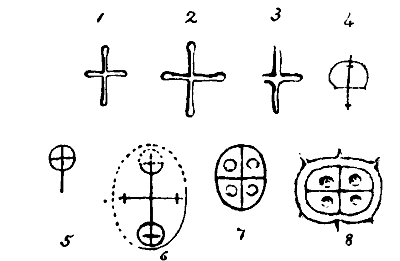
FIG. 8.-FORMS OF LINEAR CROSSES.
Wilhout Circle-(1, 2) S. Patrick's Chair; (3) Grenaby ; (4) Lonan 8.
With Circle-(5) Maughold 10 ; (6) Conchan 11 ; (7) Braddan 12 (lost) ; (8) Kerrowkiel Malew 13.
[From Manx Crosses, 1907]
The first division of this Class, the incised pieces, falls into three natural sub-divisions:- (a) The Ogam-inscribed stones. These, which have been met with only in the South of the Island, are rude, unhewn blocks, unformed and undressed, without decoration or symbol, dating probably from the beginning of the sixth century. "Though bearing no figure of a cross, they are sepulchral monuments belonging to this type. The next sub-division, (b), consists of those which exhibit a figure of the cross of varying form, but rather inclined to be equal-limbed, rudely incised in lines. A further development, (c), bears the cross in outline, still on unhewn stones, with no ornamentation, and only in three instances inscribed.
The four pieces constituting sub-division (a) exhibit no art, strictly speaking, consisting of unhewn pillars or boulders with short inscriptions in Ogams.

FIG. 8.-FORMS OF LINEAR CROSSES.
Wilhout Circle-(1, 2) S. Patrick's Chair; (3) Grenaby ; (4) Lonan 8.
With Circle-(5) Maughold 10 ; (6) Conchan 11 ; (7) Braddan 12 (lost) ; (8) Kerrowkiel
Malew 13.
In our next sub-division, (b), we meet with forms of Linear cross, undecorated (fig. 8). Three of these are the Latin cross without a surrounding circle, the two at St. Patrick's Chair forming the cross boutonnée, of which we have a few early examples in Cornwall, Wales, the Hebrides, and Perthshire. While these pages were going through the press, we found at Lonan two other pieces, the first bearing an equal-limbed cross surmounted by a half circle, the upper and lower limbs decorated with crosslets. The other has equal-limbed crosses; that on one face contained within a circle.
The early Maughold slab 10, which appears to have been the covering stone of a grave, bears a cross of a type found in Wales, Cornwall, and Ireland, sometimes accompanied by Ogams-shafted, with a circle round the upper limbs (fig. 8, 5).
In the Conchan cross 1i (fig. 8, 6) this has developed into a more perfect and pleasing design, each limb terminating in a crosslet, the upper and the lower one encircled, and the whole contained within an oval. We find the limbs terminating in crosslets on Tigernac's cross, S. Brecan's, Aranmor (Petrie, Christian Inscriptions, II., xiii., 27)-a stone which has now disappeared. An incised cross with --let- is met with also at Balquhidder, Scotland, and there are a few instances in Wales, as at Llanmadoc, and in Ireland. The lost piece from Braddan 12, had circlets between the limbs, which on the boulder from Kerrowkiel, Malew 13, become four shallow cup-like depressions. By drawing lines outwards from about the Centre of these rings or hollows, parallel with the incised arms of the cross, and connecting their ends, we evolve a form like that of the "Celtic Cross" (fig. 9). 1 do not, however, suggest that it originated in this way, believing that it was developed from the Chi-Rho symbol, as described by Mr. Romilly Allen.

FIG. 9.-CELTIC FORM OF CROSS SUGGESTED BY CIRCLES
OR HOLLOWS BETWEEN THE LIMBS.
Sometimes a rectangular panel takes the place of the circle or "glory" with which generally the cross is surrounded. Of this we have an instance in the Nappin piece, Jurby 14, a very rude form, matched however by one on the rocky islet of Ardoileån, off Galway.' At Clonmacnois, a similar one, enclosed in a panel, as in the present case, has the addition of a central diamond. Again, the centre may be square or circular, and the triangular termination. to the limbs semi-circular, with the flat sides facing outwards; this, indeed, appears to be the typical form (fig. 10). It is remarkable that this type, which at Clonmacnois occurs oftener than any other, is not represented in the Isle of Man, the nearest approach to it being at Maughold, on the Scandinavian Roolwer monument, and then only as regards the extremity of the limbs of the smaller cross on one face. In one instance however, Ballelby, Patrick 24, we find a development of this type in the form of five squares.

FIG. 10.-FORMS OF CROSS DERIVED FROM CLONMACNOIS TYPE,
WITH SEMICIRCULAR TERMINATIONS TO THE LIMBS.
(1,2) Clonmacnois ; (3) Ardoileán ; (4) Jurby 14.
This leads to sub-division (c) in which the cross appears in outline (fig. 11).
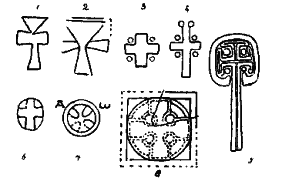
FIG. 11.-EARLY FORMS OF CROSSES INCISED IN OUTLINE.
(1, 2, 4) Peel; (3, 6, 7, 8) Maughold ; (5) Marown.
In the walls of Peel Cathedral are two very primitive forms of the cross patee, German 15-16, one contained in a rectangular panel, the other a Tau-shaped cross with triangular handle- crux ansata. A better drawn shafted cross 17, with slightly expanding limbs, angular at the points of intersection, was met with during the extensive repairs at Maughold. It may be matched by one at Daltallachan, Kirkcudbrightshire (Early Christian Tames, Second Series, p. 91). The form with expanded limbs was elsewhere in earlier use than that with straight arms, and probably was so here in the outline crosses; the latter must, however, have been introduced at a very early date. We have an example at Corna, Maughold 18 (fig. 11, 3), showing a plain cross, equal-limbed and right-angled at the intersections, with small circlets in the spaces between the limbs. A slab at Peel ig shows advance in design and more skilled work in a highly-finished Latin cross which has been made with a "punch" or square-pointed chisel ; not only has it the circles between the limbs, but the lines which form the head themselves terminate in circles. These are doubtless derived from the spiral terminations such as we find on Colman's cross, Clonmacnois, the only one I know of with the open top as in our example, which may be that of one of the Abbots whose deaths are recorded 661, 664, and 681.1 Of this spiral design, common in the North of Italy, and met with also in the Catacombs of Rome, the first example in Ireland dated with certainty from the inscription is at Kilnasaggart, A.D. 716, and we may regard that at Peel as probably about the end of the seventh century. The pure Latin form, whether incised or in relief, is rare on early sepulchral monuments; incised we find it at Roseneath and Alyth, and in relief at Abercromby and Govan.2
At Maughold Church is a cross 20, similar in form to that at Corna, but contained within a circle or oval ring-it, and the Lonan piece 9, are our only instances among these early incised stones of carving on both faces. It is at Maughold also that we have found a type, rare in Scotland, but in Ireland perhaps one of the oldest-namely, a cross formed by the intersection or, rather, junction, of four arcs of circles, and contained within a ring, all the circles being of the same diameter, 21.3 Upon this fragment, above the circle to the right, we find the Omega, which must have been balanced by the Alpha on the left. This symbol, of which we have but a solitary example, is met with in Gaul on monuments dated from 337 to 547. In Britain it occurs twice at Hartlepool, in crosses of the seventh and eighth centuries ; once at Billingham, Durham; twice in Pembrokeshire at Penarthur ; and at St. Edrens, on a cross of similar form. Once it is found in Ireland together with 1 H and xPs on the tombstone of " Bressal," Glen- dalough, Wicklow; also, with the " Chrisma " or Chi-Rho symbol, on the stone at Kirkmadrine, Wigtown, which may be of the sixth or seventh century (Christian Symbolism, pp. 116-118). See fig. 7.
In April, 1906, we discovered a slab at Marown, 22, which bears an extreme form of cross-patee, in which the terminations to the upper limbs are so compressed as to form T-shaped ends. It is shafted, and the head encircled.
We have at Maughold 23 our first example of a cross of the typical "Celtic" form whether shafted or equal-limbed the stone is too fragmentary to determine. The limbs are connected by a broad circle, and the whole is contained within a rectangular panel. In Ireland this form came into general use in the eighth century, and we find many within panels belonging to the eighth and ninth centuries at Clonmacnois (Petrie, Christian Inscriptions, x., xi., etc.). Another equally Celtic form of cross is that consisting of five squares, one in the centre and one for each limb, connected by narrow bands. This is a variation of the type with square centres but semi-circular terminations to the limbs, such as that at Iona (Petrie, Christian Inscriptions, ii., lxiii. ; Early Christian Monuments, figs. 401, 405). It occurs at St. Andrews and Inchbrayoc, and with shaft is not uncommon in Scotland, especially in Perth and Forfarshire, as at Kingoldrum, Kirriemuir, Monifieth, Dunfallandy, Abercrombie, and Meigle.1 It occurs in Wales, and is met with at Clonmacnois as early as the eighth or ninth century (Petrie, Christian Inscriptions, ix., xxvii., 67 ; xxxvii., etc.). The large slab at Ballelby, Patrick 24, bears an incised cross of this design, differing however from all other examples in respect of the squares being detached, their connection being only suggested (fig. 12).
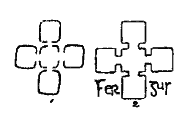
FIG. 12.-CELTIC FORM OF CROSS CONSISTING OF FIVE SQUARES. (1) Ballelby, Patrick; (2) Clonmacnois. |
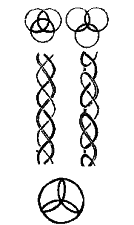 FIG. 13.-TRIQUETRA. A design formed by three circles, each overlapping the other two ; or, from a three cord plait, with horizontal breaks at every other crossing point in one row. |
Our few decorated incised pieces are all from Maughold. An interesting one, 25, shows remains of an inscription in Anglian Runes, of the seventh to ninth centuries. Within a circle is a cross, formed as in 21, each limb occupied by a triquetra in double finely-incised lines. This design may be formed by the intersecting lines of three overlapping circles, its proportions depending upon the amount of over- lapping, or by a single ring folded on itself so as to present three external points ; or it may be regarded as a knot derived from inter- lacing (fig. 13). It appears in Byzantine art, and was an early design in Anglian and Celtic work; becoming a dominant one in the decorative art of the tenth century. In the Book of Kells, eighth century, we meet with it as a simple knot, also continuous in a design of six confined within a circle. See the word " QUONIAM " on the first page of St. Luke's Gospel. It occurs or the Anglian Frank's casket, l00-800, and in the Psalter of King Athelstan, 703 ; frequently alsc on metal work of the tenth and eleventh centuries. The earliest instance on stone is in the form of the " Stafford knot," with two ends loose, on the Collingham cross, if we accept Professor Stephen's date for that piece, 6,51 (0. N. Runic Monuments, i., 390; the next on the eighth century Irton cross, Lancashire, both of these being Anglian. It occurs singly on a cross shaft at St. Andrews (Stuart, Sculp. Stones, ii., ix.). In Wales we meet with it on the handsome monument at Llantwit, supposed to have been erected in the ninth century by Howel ap Rhys to his father; on many others also of later date, either singly or in knot- work. In Ireland it appears at Clonmacnois on stones dating from 860 to 991.
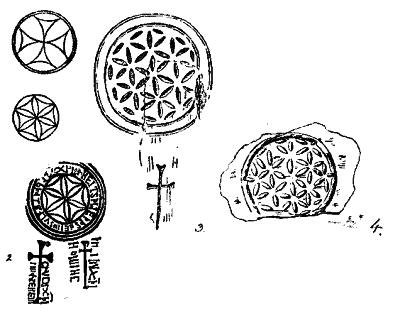
FIG. 14.-HEXAFOIL DESIGNS, POSSIBLY SUGGESTED AS A FORM OF CROSS BY THE CHI-RHO
SYMBOL.
(1, 2, 3) Maughold 26, 27, 28 ; (4) Clonmacnois, having a similar design to
that on Maughold 28, but in relief
Three other of these early incised pieces are decorated, having designs of Hexafoil, which in the first instance may have been suggested by a combination of the Chi, Rho and Iota, and so be considered as another form of cross evolved from a symbol (fig. 14). The first, 26, has a cross of similar form to that with the Anglian runes, Maughold 25, below which, within a smaller circle, is a simple incised Hexafoil. The next, 27, which bears an inscription in Hiberno-Saxon characters, has a deeply-outlined Hexafoil within a flat circle, in the position, be it observed, usually occupied by the Celtic or some other form of cross. A further development occurs on 28, consisting of a series of seven Hexafoils within a circle, not merely in outline, but sunken. Once elsewhere I have met with an exactly similar design-namely, at Clonmacnois, where in 1895 I turned up a broken slab not hitherto figured or described, a difference, however, being that in the latter case the Hexafoils and circle are in relief, which may indicate later work. The Hexafoil alone appears on a Roman stone from Battle, Brecknockshire (Lap. Wall. 42, 3), which may be of the end of the first or the beginning of the second century. We find it in Celtic MSS., as in the Book of Deer, ninth century, where it is enclosed in a circle in the centre of the page. It is rare on stone. at Millport, Bute, we find it sunk and enclosed within a circle, decorated also with a fine border line ;1 and at Cladh a Bhile, Argyll, with a cross patee below-exactly the reverse of our Maughold 26.2 The Maughold piece 28 has below the circle a dagger-shaped cross, and a comparison with the inscribed one, 27, suggests not only that this may have been balanced by another now broken off, but that it may be just one stage further in the development of the cross from the symbol!-for in 27 (fig. 14, 2) we clearly trace the flourish which represents the disappearing loop of the Rho. The example at Whithorn 3 may be of the latter part of the sixth century; at Kirkmadrine (see fig. 7) we have three instances very similar to those now found at Maughold, which the inscription On 27 shows belong to the seventh or eighth century.
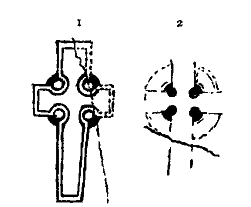
FIG. 15.-CROSSES SHOWING SUNK WORK, MAUGHOLD.
(1) Celtic type with sunk circle and flat bosses at the junction of the limbs
; (2) Celtic type without the bosses, the spaces between circle and limbs having
a thistle-head form.
The inscribed stone from Santon 34, bears no figure or decorative design, but the inscription in Roman characters, mixed Majuscules, Manuscules, and Uncials, connects it with a class of pillars common in Wales earlier than the seventh century. The space containing the inscription is sunk, and the surface dressed smooth.
This sinking of part of the design or of the background marks an intermediate stage between the incised outline crosses and those sculptured in relief; curiously enough they all, except the Santon one, occur at the Parish Church, Maughold.
Number 29 shows a shafted cross of typical Celtic form except that the head is unusually heavy in proportion to the shaft, outlined by two incised lines about an inch apart Between the limbs the outer of these lines is broadened so to form the four arcs of a sunken circle connecting them. The spaces between this and the recesses of the limbs, not having been cut away, give the appearance of flat bosses (fig. 15).
Another fragment, 30, has borne a Celtic cross; very slight trace remains of a connecting circle between which and the limbs the recessed spaces are sunk. This may be compared with a stone at St. Andrews (Stuart, Sculp. Stones, ii.)
A broken cross, 31, shows traces of an incised line with flat circle connecting the limbs, between which the spaces are sunk. From Ard Cooillean, Dhoon, is a similar cross, 32, with sunk spaces between the limbs and circle, a different outline being presented, however, by the square ends of the limbs starting a short distance before intersecting the circle, so that the sunk spaces resemble thistle-heads (fig. 15). This form we find at Clonmacnois so early as 720 (Petrie, Christian Inscriptions, i., iv.). The last of this type of partly-sunken work is one from Ballaglass, Maughold 33, which, like that at Peel 19, has been worked with a punch or square chisel.
1 Since I saw it, this has been figured by R. A. S. Macalister, "Antiquities of Ardoileán," journal R.A.S.I., September, 1896, part 3, vol. vi., 5th Series.
2 Petrie, Christian Inscriptions, I. ii. 6.
3 Early Christian Monuments of Scotland, figs. 304, 361, 473, 493, and 500.
4 In this case, however (fig. 11, 7), the circles approach closely, but do not actually join.
5 Early Christian Monuments, figs. 374, 378. and 235 ; 238, 239, 241, 305, 363, 311, 314
6 Stuart, Sculp. Stones, IL, lxxiv.
7 Early Christian Monuments, fig. 418.
8 Stuart, Sculp. Stones, IL, Ixxi., lxxvii.
We now come to pieces which show a great advance on the above in that they are sculptured in relief. The stone is generally surface-dressed, though to a very slight degree in one or two instances we meet with raised borders to the slabs, the shape of which is more or less rectangular, in four cases wheel-headed.
Division 2, those sculptured in low relief, sub-divides into (a) undecorated, of which they are few; and (b) decorated, which exhibit Celtic designs common to such monuments in Ireland, Scotland, and Wales, consisting of (i.) Geometrical and (ii.) Zoomorphic patterns and (iii.) Figures of Men and Animals treated as decoration or forming pictorial representation At Santon we have in 35 a solitary instance of a plain Latin cross without circle, the shaft very slightly expanding. This form, a favourite in Cornwall, is rare elsewhere. In Ireland it only occurs, I think, at Clonmacnois (incised outline) on four stones (Petrie, Christian Inscriptions, 44, 59, 6o, and 160), and on one at Lismore, 43. In Scotland we meet with it in relief at Old Deer, Govan, Balquhidder, Alyth, Abercromby, Roseneath, and Soroby.l The earliest dated example of the form appears to be about 884. In Cornwall are half-a-dozen rectangular slabs similar to our Santon one, as at Tregurnow Down, St. Buryan ; there are also many high wheel-crosses with the same design. We have at Braddan 36 a Latin cross, but with expanding limbs, connected by a circle beyond which the head projects. The circle was bordered by a fine incised line. No. 37, also at Braddan, shows a cross patee within a circle, the shaft extended beyond; in the centre is a small incised circlet. At Maughold, 38 shows on each face of the slab a cross of typical Irish form. The flat bead border is very distinct, also the incised ring in the centre. At one time I thought it had been decorated with plait work too worn to decipher, but from a closer and more careful scrutiny I now think that it never was decorated. All the above are on rectangular slabs. At Maughold we have, in 39, a wheel-cross, a common form in South Wales and in Cornwall, which occurs also on half-a-dozen stones in Wigtownshire. It bears a plain cross with expanding limbs on a broad flat circle, below which is a rectangular panel bordered by a double bead. The other face has a similar circle and panel, but no cross. This brings us to a class of early monuments at Lonan Old Church, Groudle, so closely resembling one another as to make it likely that most of them were carved by one hand. All are wheel-headed, and differ from our other crosses in having two circles, one connecting the outer ends of the limbs and a narrower one at the inner corners of the square ends. Thus 40, a small piece of clay-slate, shows an equal-lambed cross bordered by a narrow bead, the circle connecting the outer ends of the limbs having similar borders, of which the outer one encloses the limbs, the inner angles of their square ends being connected by a narrower circle. An incised line suggests the continuation of the shaft; the sides of the slab are bordered by incised lines. The workmanship of the next, 41, is affected by the harder material, Silurian grit; it bears a similar cross and circles, the centre occupied by a small boss sunk in a socket. The cross, which has a bead border, is unfortunately broken, so that one cannot say whether it was equal-lambed or shafted, probably the latter; the head is roughly rounded, but may have been intended for a wheel-cross.
No. 42 is a good instance of such a cross, having the shaft terminating in a base or pedestal. The form with pedestal is unusual. We meet with it in three tenth century slabs at Scattery, Iniscathra, Galway (Petrie, Christian Inscriptions, ii., pl. xxvii., 57, 58, 59). In Scotland are only three or four examples.
Intermediate between the plain pieces referred to and those showing more decorative art are a few, possibly of earlier date than some already described, which have a very simple decoration in the form of circles, cups, crosslets, pellets, or bosses.
At Kirk Bride is a sandstone cross 44, of which the stone itself is cruciform in outline. The head, now lost, appears to have had an incised ring in each limb, connected by double lines, and from the lower ring lines radiated to the sides. A sandstone pillar similar to this in outline is at Llanmadoc, Gower (Lap. Wall., p. 238, pl. 101, 2). Cruciform stones are met with at Dull, Perthshire and Bute (Stuart, Sculp. Stones, ii., 17, 74 ; Early Christian Monuments, fig. 432). A very primitive-looking stone at Maughold 45, also cruciform in outline, has a large central boss, and about the middle of the shaft a raised wavy band, between which and a band lower down formed by two incised lines are five cup-like depressions in a row, reminding one rather of Cornish crosses, on which the use of cup- hollows is not infrequent in decoration. In some cases we find panels on the cross so ornamented, as at Laniveti and Penzance, and one from Truro, now at Eastbourne, Sussex. A small cross at Budock, near Falmouth, has a design of five set in the form of a cross. In Scotland, one from Eilean Mor, Argyll, shows a set of three cups in a triangle above each arm of an incised cross, and from Sinniness, Wigtown, an early slab shows two such sets above each arm of the cross.2 A stone from Pen-y-Mynnid, now lost, figured in Gough's Camden, ii., 14, 4 (also Lap. Wall., 39, 5), shows little circles arranged in triangles.
The Peel slab 46 is ornamented with five incised linear crosslets, which are probably marks of consecration, if indeed this has been an altar-slab. An upright stone at Bradda, in Rushen 47, the cross on which shows the Celtic hollow recesses at the junction of the limbs, had probably an outline circle surrounding or connecting them, but if so it is now completely worn away. A small crosslet is incised on each limb. Similar crosslets are to be seen on early Welsh pieces at Llanfihangel ar Arth and Bryngwyn (Lap. Wall., 48, 2, 73, 2). In Scotland two early pillar-stones at Laggangarn, Wigtown, have four such crosslets surrounding the main cross (Early Christian Monuments, p. 502).
The Guriat stone 48 from Port-y-Vullen, Maughold, has a pedestal cross, ornamented by large bosses, one in the centre and one at the intersection of each limb with the circle, each boss surrounded by a bead moulding, with which, also, shaft and pedestal are bordered. The short Latin inscription shows the date to be about early ninth century. The use of bosses is general, perhaps more so on the Scottish monuments than elsewhere. Sometimes the cross is covered with them, as at Shandwick (Stuart, Sculp. Stones, i., 27) ; or we find them on both cross and circle, as at Meigle ; or in panels, as on the high cross at Kells. A central boss is not uncommon, and sometimes we find them arranged, as in the present instance, e.g., at Clonmacnois, Kilklispeen, and Iona. Its use may have been in part suggested by metal work-thus, the shrine of St. Patrick's Bell, the processional cross of Cong, and many cumdachs or early book-shrines, like that of St. Molase's Gospels ; 3 for though these are later than some of the stone monuments, the same ornamental idea had doubtless obtained in earlier relics now destroyed or lost. In the Port-y-Vullen instance the limbs of the cross are not actually represented. A similar effect to this occurs on an early cross with Pictish symbols at Aberlemno, Forfarshire (Stuart, Sculp. Stones, i., 81), but in that case the circle is crossed by square rings, with round bosses between them.
The Glion Ruy slab, Lonan 49, like all others from that district, is a wheel-cross. The stone itself is bordered by a double bead, which surrounds the head of the cross and circle; the cross also has a bead border terminating in volutes, one of which, evidently by accident on the part of the stone-cutter, has taken the form of concentric circles. Between these volutes are triangular designs of pellets. Involved spirals or volutes like this are not common; we meet with them on a slab at Clonmacnois, dated about 870, and two others (Petrie, Christian Inscriptions, 58, 166, xx., xxiii., and xlii.) ; also on two stones at St. Dogmaels, Pembrokeshire(Lap. Wall., pl. 61, 1, 2). In a small sunk panel on the shaft of this cross is a figure which I take to be a Ladle, here used as a symbol of the priestly office, just as at a later date the chalice.
FIG. 16.-CALF OF MAN CRUCIFIX.
From Drawing by Sir H. Dryden.
Before dealing with the other more highly-decorated Celtic pieces, I mention here the Crucifix found in the ruins of a Keeil on the Calf of Man 50, which differs in character and design from any other monument found here or elsewhere. It is a unique example of the Byzantine treatment of this subject on stone, and the only other object with which it can be compared is the bronze found at Clonmacnois, now in the Dublin Museum,' regarded by Petrie as belonging probably to the ninth century.2 The less conventional and generally more archaic treatment of our Manx example shows it to be of earlier date. The form of cross, it will be observed, is Latin, no representation of this subject having been found on a cross of Celtic form -a circumstance inclining to support the view of the derivation of the latter from the sacred symbol. It is worthy of note that the feet of the Christ are exactly as represented in the Book of Kells, which probably dates from the eighth century. Two favourite Celtic designs appear upon the robes-the Triquetra Knot and the Four-fold Ring-both of which, however, are derived from Byzantine art.
I refer later to the earliest example of the Crucifixion in MS. in the sixth century copy of the Gospels now in Florence, and quote Mr. Romilly Allen's lucid description of the development of its treatment from Byzantine sources to the present time. The only explanation of its appearance in this little Keeil, in the out-of-the-way Calf of Man, is that the artist must have been familiar with this early mode through some illuminated MS., while the slight use of Celtic designs points to the fact that he was acquainted also with Irish or Celtic art.
To judge from their treatment and appearance, the pieces to which I have previously referred must all be earlier than the tenth century. We now come to some which exhibit (i.) geometrical designs, (ii.) zoomorphic interlacings, and (iii.) figure subjects. Though scarcely possible to assign an exact date to any one of these pieces, it is evident that they constitute a series carrying us on to and possibly even overlapping the early period of Scandinavian monuments in the Island-that is to say, about the middle of the eleventh century.
1 Stuart, Sculp. Stones, i., 11, 123, 124,137; ii.) 48,68. Early Christian Monuments, figs. 304, 361, 473, 493 496, 500.
2 Langdon, Cornish Crosses, pp. 295, 308, 304, 245
3 Early Christian Monuments, iii., 402, 504.
4 Early Christian Art in Ireland, Margaret Stokes, part i., pp. 6o, 93.
5 Stuart, Scutt. Stones, vol. ii., plate io; Christian Symbolism, fig. 32.
6 There are also two smaller bronze plates in the Museum.-Christian Symbolism, p. 146.
An exceptional piece, possibly one of the earliest which exhibits geometrical designs in relief, is the wheel-cross from Ballafayle, Maughold 51. As it bears also a figure-subject, I should in strictness deal with it later on; but as I think that in chronological sequence it comes before several other pieces not having figures, I prefer to regard it as exceptional in that respect. One face bears a cross patee within a circle, the limbs formed by knotwork and set at angles instead of having the curved recess of the Celtic cross. Two of the knots are what I call double triquetras-that is to say, if separated and the connecting bands of each closed, each would make a perfect triquetra. One arm is occupied by a plait of five, and the lower limb, which alone has a border, by a curious design of two diagonal bands crossing each other, in the centre and the borders at the corners, the five points of crossing and overlapping marked by rings interlaced with the bands. A precisely similar design occurs on a cross bearing an inscription in Anglian runes at Chester-le-Street, N. Durham, dated 700 to Boo (Stephen, O.N. Runic Mon., iii., 461). 1 have seen nothing like it elsewhere. The curious figure on the fust or pillar, with limbs partially outstretched, must be intended for a representation of Christ, though not upon the Cross.
A small panel cross, Maughold 52, has the intersection of the limbs at an angle like the last. The circle connecting the limbs bears a plait-of-four, as does also the rectangular border to the stone. The earliest dated plait ornament at Clonmacnois is 984, on a stone bearing the name Muirgus (Petrie, Pl. li., fig. 128). It occurs on Anglian pieces of an earlier date derived, not from Ireland, but direct from Northern Italy.
The limbs of the cross have a design of two diagonal oval rings interlaced, the upper one showing an irregularity in the drawing, possibly intentional. The shaft, also, below the diagonal rings, has borne another design too worn to decipher with certainty; possibly it consisted of two such rings interlaced with a square or diamond-shaped one. The interlaced diagonal ring device is not common. The design, numbered 766 in Mr. Romilly Allen's Analysis,' occurs on five stones in Scotland, nine in England, and six in Wales.' The sunken space in the form of a cross with pointed ends, outlined by the decorative designs on this stone, is a peculiarity I have not met with elsewhere. Mr. Romilly Allen gives an example of the ten-cord plait with cruciform space left by the plait at St. Andrew's, Stone Grove, Yorks., and in MS. at Petersburg.
In the solitary fragment yet found at Lezayre 53, the outline of the stone has been shaped to the circle and the slightly projecting limbs. One cannot say whether the cross was shafted or equal-limbed. The four-fold ring on the central boss of one face we have already seen on the Calf of Man Crucifix. This design of a Ring folded on itself with four exterior loops, the precise form of which depends upon the space to be occupied, is not infrequent in Celtic art, as on the Killamery cross, O'Neil (pl. i.), Skinnet, and Meigle, in Scotland (Stuart, Scul p. Stones, i., 73, Analysis No. 777). The ringed figure-of-eight which appears to have been the design on the head, is a device originating like the last from a Byzantine source; one of the limbs shows the Double Triquetra design, and the centre a similar device formed of one continuous double band,(Analysis No. 733, 781). See also a cross from Clonmacnois, A.D. 991.
A very worn slab at Maughold 54 gives a single instance of a new variety in the form of cross-a square-shaped central ring, which has been ornamented with plait-work, doubling the recessed arcs between the limbs in cusped hollows, thus presenting an outline met with in an early cross with Pictish symbols at Ulbster, Caithness. The surrounding circle, of which only the left-hand upper quarter remains, was merely outlined by incised lines, reminding one of the Guriat cross at Port-y-Vullen, little more than a mile away, like which also the shaft terminates in a square pedestal. The slab itself has a narrow plain bead border.
At Maughold also we have in 55 a solitary instance of yet another form-that of two circles connected by one shafted cross, the smaller one containing an equal-limbed cross. The smaller cross and circle, though much worn, show evident traces of plait-work. A similar form occurs once in Wales at Llanspyddyd (Lap. Wall., 39, 4, p. 71), namely, the cross popularly known as that of Brychan Brycheiniog, to whose reputed son, St. Cadog, the church is dedicated. Cutts figures one found at Cambridge Castle, with interlacing, which he dates beginning of the eleventh century, and another which shows cross patee within sunk circles connected by a single shaft.'
The round or intended wheel-headed Braddan Stile cross 56, our first instance of one with the spaces between the limbs pierced, is not easy to place satisfactorily, but seems to fall in here, perhaps, better than elsewhere. The circle which crosses over the limbs is ornamented with a twist, the points of crossing being emphasized by circular rings. This twist- and-ring design is not uncommon in Celtic work, being derived possibly from a looped twist. At Llantwit it adorns the edge of a stone dating from about the middle of the ninth century (Lap. Wall., 7). Mr. Romilly Allen (Analysis No. 574) derives it from a four-cord plait, and names twenty-four instances in Scotland, nineteen in England, of which six are in Cornwall, three instances in Wales, and one in Ireland.
The design on the limbs appears to be a badly-drawn knot or ring, so folded on itself with external loops, meeting in the centre, as to present the form of two figures eight crossing at right angles.
The loop-form of plait, contained within a panel below, is similar to that on a stone at Aspatria, Cumberland. The only other example like this is at Forres, and as the cords from the loops in the right-hand row make a very ugly curve backwards in order to join on to those in the left-hand row, and the pattern can never be made a good one from a decorative point of view, Mr. Romilly Allen (Analysis No. 657) thinks that " its presence would seem to indicate inferior skill in designing interlaced work, probably at a time when the style was becoming more or less degraded." Not only does the upper right-hand corner loop in our example give place to a ring, but halfway down on the same side we find the middle loop becomes a ring, evidently by a slip of the chisel, incidentally showing how easily a loop or spiral is converted into a ring, and supporting the view that the twist-and-ring design may have so originated from a looped twist (fig. 17, 4).
There is a free use of pellets to fill in spaces ; the execution throughout is faulty; and it seems not unlikely that the monument may really have been carved by a Scandinavian sculptor working on unfamiliar Celtic models. But as there is no certain proof of this, I feel compelled to find a place for it here. The early form of incised cross on the other face of the stone is not of itself sufficient indication of the period.
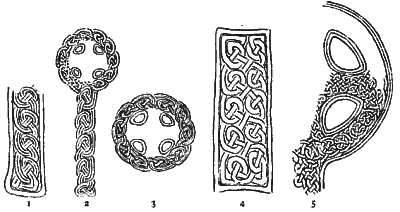
FIG. 17.--FORMS OF LOOP-PLAIT.
(1, 2) Maughold 65, 66; (3) Michael 64; (4) Braddan 56; (5) Conchan 63.
In respect of its faulty execution, this Braddan stone is matched by the large wheel cross at Lonan Old Church, Groudle 57, which is closely covered with plait-work, badly drawn, with many short straps, loose ends, and irregular overlappings. The circles connecting the limbs show twist, plait-of-three, and plait-of-four. Across the fust also are four bands of plaits-of-three and of four. The sunk spaces between the circles are occupied by diagonal rings, interlaced.
In the wheel cross from Maughold, now at Malew 58, we have an elaboration of the twist- and-ring design. In this case two parallel bands cross at regular intervals two other parallel bands interlacing with each other, and with a diamond-shaped ring, at the points of crossing. In the Isle of Man this becomes a favourite design later on Scandinavian pieces. A near approach to it occurs at Drainie, Elgin, where two parallel double bands cross two others, interlacing with two rings, which, however, are circular, not diamond-shaped (Stuart, Sculp. Stones, i. 130; Analysis No. 576). Mr. Romilly Allen mentions instances of this from Durham Cathedral and Hope, Derbyshire. On an early piece at Rothesay, Bute, we have the two parallel bands in a twist, but without the ring (Stuart, Sculp. Stones, ii. 72). Varieties and elaborations of the design occur in Celtic MSS.-e.g., in the Book of Durrow, seventh century, we find it in a border to the frontispiece to the Epistle of Jerome, the position of the diamond ring being taken by four loops in the centre.
The possible evolution of our Manx form may be traced on the broken shaft of a cross from St. Oswald's, Durham. The two faces show the design of double twist interlacing within treble circular rings. On one edge the rings become diamond-shaped and their points are connected by a middle band, the outer bands being elongated between the rings ; on the other edge the rings are detached as in our examples, the middle band being represented by oblong pellets. Or, this form might be derived from a six-cord plait, the outer cord breaking at intervals and closing in to make the diamond-shaped rings, the others running in parallel pairs, and being more or less elongated and flattened between each ring, within which they cross and interplait. The pellets at the sides in the Conchan slab, 59, may be considered as survivals of this continuous outer cord (fig. 18).
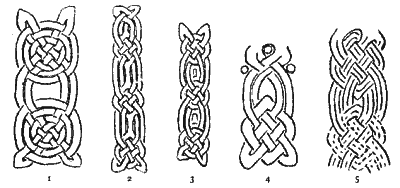
FIG. 18.-EVOLUTION OF DOUBLE TWIST-AND-RING DESIGN.
(1, 2, 3) Face and Edges of Cross Shaft from St. Oswald's, Durham ; (4) Conchan
59 ; (5) Maughold 58.
We have another instance of this design on the large rectangular slab at Conchan 5g, which has a shafted cross and expanding limbs overlaid by the surrounding circle. The curious interlacing of the narrow band crossing the limbs and under and over the circle, forming a heart-shaped design of double loops, is very striking. A stone at Bressay has a somewhat similar band of single loops, but no circle; otherwise I know of nothing resembling it. The other face of this has a figure-of-eight plait formed by a continuous triple band starting from the left-hand corner below the circle, supplemented by a similar band from the right-hand corner, and an odd piece from the right of the upper bow of the "eight." We meet with various combinations of loops showing a figure eight (Analysis No. 559-572) which, as Mr. Romilly Allen points out, may be derived for the most part from eight-cord plaits. The present instance is peculiar in respect of the extra bands.
The crosses on both faces of this stone are ornamented with plain flat bosses, a large one in the centre, and four smaller in the spaces between the limbs, outside the circle.
1 Early Christian Monuments of Scotland, part ii., p. 297.
2 Westwood, Lap. Wall., pl. 3, 4, 43, and 57
3 Manual for the Study of Sepulchral Slabs and Crosses (Rev. E. L. Cutts, B.A.), pl. xxxiv. and xxxv.
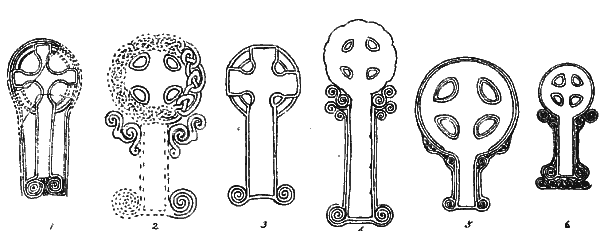
Fig 19 PRE-SCANDINAVIAN CROSSES HAVING SHAFTS DECORATED WITH VOLUTES AND SPIRALS
(1) Lonan (involved) 49 ; (2) Michael 64 (3,4) Maughold 66 (5,6) Conchan 62,63
It is rather curious that in the Manx pre-Scandinavian pieces we have no instances of that zoomorphic interlacing the lacertine and bird-like figures with elongated top-knots, tongues, tails, and legs interlaced, which we generally asso- ciate with Celtic decorative art. Our nearest approach is on a fragment from Cardle, Maughold 6o, which shows the lower end of the shaft of a cross with dragon-headed plait-work, between which and the flat borders are double spirals. The plait-work seems to have been elaborate, a good design, and well executed, but the scattered spiral figures detract from the artistic effect. The small cross, Conchan 61, reminds us of the irregularity of the continuous interlacing which covers the large equal- limbed cross, Lonan 57, which is but a mile and a half away. Like that, also, it has the limbs connected by two circles, decorated with plaits-of-four and twist. The bands have been bordered by fine lines. Below the circle, in a sunk panel, are two dog-headed figures, one apparently with a head at either end. Above is the diagonal ring device, faulty in drawing. We note the use of pellets to fill up the spaces.
A round-headed cross at Conchan 62 has borne a fine example of continuous and very regular plait-work covering cross and circle ; in the shaft this is divided into panels by " breaks " at irregular intervals. It is by the intro- duction of such breaks, says Mr. Romilly Allen, that "all the patterns used in Celtic interlaced ornament appear to have been developed out of plait-work."' The beads bordering the shaft terminate in volutes, and at the foot is a band of scroll ornament-a solitary instance, the spiral being rare in our district (fig. 19, 6). This band Mr. Romilly Allen describes (Analysis No. 1,043) as "one row of double spirals connected by S-shaped curves, with other curved lines branching on one side from the middle of each S." A very similar design, but without the branching lines, occurs at Golspie and six other places in Scotland, and at Castle Dermot, Tuam, and Cashel in Ireland. Spiral terminations to the shafts of crosses occur both in Scotland and in Ireland, as at Kilmalkedar and Reask, in Kerry (Arch. Carob., 5th ser., vol. ix., p. 146), and on some ninth century crosses at Clonmacnois (Petrie, Christian Inscriptions, vol. i., pls. 14, 20, 23, 42). So also in Scotland at Dunblane, Tullibole, Dyce, Alyth, Gask, St. Vigean's (Early Christian Monuments, figs. 330, 375, 206, 304, 307, 278).

Fia. 20.-FYLFOT AS A DECORATIVE FORM OF CROSS.
(1, 2) Kenneth Cross, Dearham; (3) Conchan 62.
Below the scroll-work is a group of four single spirals revolving from left to right, with their diverging bands interlaced in the centre (Analysis No. 1,123), giving the appearance of a Fylfot or spiral-headed Gammadion (fig. 20).
The dog-headed monsters supporting the cross at either side of the shaft have their bodies broken up into spirals; from their open jaws long tongues protrude, looping round their forepaws and descending to their feet. The pear-shaped eyes, with the round end towards the nose, are Celtic, as are the spirals and the long lolling tongues which we find in just such dog-headed figures in the Book of Kells and other MSS. The Fylfot reminds us of the less elaborate one on a sixth century stone at Dearham and an early Norse one at Isel, Cumberland. As a decorative form of cross it was early adopted and freely used in Christian art in MSS. and metal work, less frequently on stone.
The large wheel-cross, Conchan 63, may have been carved by the same hand as the last. The interlacing, which is close and compact, save on the shaft, where it is more loose and open, shows a special tendency to loop, and, in the circle, becomes an effective plait, composed of a combination of unsymmetrical loops in pairs, facing inwards, surrounded by extra bands, forming a figure-of-eight knot, which are continued to form in their turn the next enclosed pairs of loops (fig. 17, 5). The breaks thus made in the regular line of the plait leaving small blank spaces at intervals, afford variety and relieve the monotony and stiffness of the pattern. Mr. Romilly Allen (Analysis No. 645A) gives this design as one which may be derived from an eight-cord plait, and names other instances of it at Monasterboice and Glassonby, in Cumberland. As in the last, the beads bordering the shaft here terminate in volutes, and the cross is supported by two dog-headed monsters seated on their haunches.
1 Early Christian Monuments, part ii., p. 145.
The Bishop's Court stone, Michael 64, which is carved on both faces and edges, shows affinity to the last two. Each face has borne a Celtic cross and circle ; the border of the shaft on one face terminates in a double volute, and just below the circle we have a detached 8-shaped spiral device. The circle gives us another form of loop pattern composed of two bands which alternately loop and pass through each other, forming a single row of loops, all left-handed and facing upwards (fig. 19, 2). I do not find an instance of this precise form in the Analysis, though Nos. 655 and 656 show it in combination with loops facing the other way, as at Moone Abbey, St. Andrews, and Arthurlee. The circle on the other face has a plait-of-four, and the edge of the slab bears a plait-of-three. The dog-headed monster at the right of the shaft, which no doubt was balanced by a similar one on the other side, has its chin resting on its hands, the fingers outspread, as in Conchan 62. At the foot of the cross we have the well-drawn figure of a hound, and on the other face a warrior on horseback armed with a spear.
The badly weathered and broken stone, for many years a lintel to the east window of Maughold Church 65, shows a different style from any yet dealt with, the abortive spirals and general treatment connecting it with a series in Cumberland considered by Canon Knowles and the Rev. W. S. Calverley, with whom Mr. Collingwood agrees, as Cymric, their art derived from and subsequent to the Anglo-Saxon classic epoch, and dating from about the eighth to the twelfth century. At Aspatria, Distington, and Dearham we find similar workmanship. One face shows remains of the shaft of a cross with a loose form of loop-twist of two bands, alternately forming right-handed loops facing upwards (fig. 17, I). The nearest approach to this design given in the Analysis is No. 634, from Coddingham, where, however, the loops are in pairs from opposite directions, and No. 655, from Moone Abbey, where the loops are alternately right and left-handed. Below is a panel of Key-fret-a good design, but badly executed, terminating at the top in spirals, and filled in with pellets. The other face shows a beast, evidently intended for a stag, with the antlers treated in a curiously conventional way of which I do not know of another instance-a number of small straight lines projecting diagonally, before and behind, from a straight horn! The four feet and snout of an animal at its back must be meant for a dog. Above is a man with arms akimbo on his breast, holding between his hands a closed book, doubtless a Plenarium or copy of the Gospels, with an equal-limbed Celtic cross on the back of it. By his side is a pastoral staff of early form, and around him, very rudely executed spiral or scroll-work. The appearance of the Staff reminds us that the estate adjoining the church, part of the Barony of St. Bees, is known as " staff-land," and is freehold, which in the Isle of Man is exceptional. It seems most likely, as pointed out by Mr. Moore in his work on Manx names,' that the service on which these lands were held may have been that of the presentation of a staff or crozier, which the proprietors had to produce for the annual processions on the day of the Saint to whom the Church was originally dedicated.2
We have a fine piece of work in the stone recently removed from its position as lintel over the west door of Maughold Church 66. Each face bears cross and circle; one has the shaft bordered by a double bead, ending below in volutes, and above, beneath a double co-shaped spiral, the volute of the inner bead projecting beyond that of the outer. The limbs are occupied by a neat plait-of-four formed of double bands, the shaft having a twist of double bands looping from right to left; this is continued on a reduced scale by a single band round the circle (fig. 17, 2). The edge of the stone has a plait-of-three ; on the other face the cross is covered with a plain plait-of-four, bordered by a single bead terminating below in a volute. Facing the shaft is a well-drawn figure of a robed ecclesiastic. Below, we have stags hunted by hounds, and a man on horseback. The first face also shows stags and hounds below, and boar and hounds at the side of the shaft.
The figure drawing on this stone presents some peculiarities: there is again a conventional treatment of the antlers, giving in this case a fan-like appearance quite unlike the last, but differing greatly from the realistic drawing on our later Scandinavian pieces; the curious prominent angle of the lower jaw in all the animals is very marked, but especially so in the case of the hounds. The profile of the ecclesiastic is exceedingly good, and all the figure drawing is very spirited.
Another slab at Maughold 67 has a cross of the Kells type. Cumming shows plait-work on the circle,' 1but I can detect no trace of any ornament on either cross or circle. At either side, facing the shaft, is the figure of a monk, robed and hooded, seated on a chair, apparently without a high back. Below, on each side, is a rider on horseback; below, a boar and some other beast too worn to decipher. The figures are well drawn.
The fragment from Santon 68 has unfortunately lost the lower panel, which appears, from Dr. Oswald's description, to have contained a figure of a man on horseback, with some interlacing, a fragment of which remains.2 The upper part shows a cross patee within a circle, the outline of the limbs defined by rounded bead mouldings, with well-drawn triquetra knots occupying the limbs.
1 Surnames and Place Names of the Isle of Man (A. W. Moore, M.A., etc.), p. 308.
2 Our only other Staff lands were in the Parish of Patrick; they are mentioned in a Papal Bull of 1231 as "terrain de baculo Sti: Patricii." Mr. Moore, by way of showing that such tenures were known elsewhere, quotes a grant of lands in the Isle of Lismore with the custody of the Staff of St. Moloc, dated 1544. Similarly other relics, such as bells, books, and shrines, had their hereditary keepers. Thus the Monymusk Shrine, the Brecbennoch of St. Columba, one of the sacred relics borne into battle with the host of Alba, had an endowment of lands for its hereditary keepership, and these lands of Forglen with the Brecbennoch were bestowed by King William the Lion on the Abbey of Arbroath. In the early part of the fourteenth century the Abbey and Convent of Arbroath gave these lands to Malcolm of Monymusk on condition "that he and they shall perform in our name the service in the King's army which pertains to the Brecbennoch as often as occasion shall arise."-Scotland in Early Christian Times (Joseph Anderson, LL. D., etc.), pp. 241, 250. Our only other figure of a pastoral staff, equally simple in type, occurs on a Scandinavian piece, 72, also at Kirk Maughold.
This Maughold Staff may even have been one of the relics mentioned in the Order for Tynwald in our Lex Scripta (about 1417): "The three reliques of Man there to be before you in your presence and three clarkes bearing them in their surplesses."
3 Arch. Camb. Manx Society, vol. xv., p. 16, fig. 4.
The large wheel-cross at Braddan 69 is similar in outline to the Lonan one, Groudle 57, though not so high, the head being of exactly the same diameter. The limbs are decorated with plait-work, involved and loose, but evenly balanced. The circles connecting them also show plaits-of-five, four, three, and six. The spaces between the limbs and circles are occupied by dog-like animal forms, which do not appear to be otherwise than decorative. The upper limb is the most interesting, as it gives a Scripture subject, being intended for a representation of Daniel in the lions' den. This is figured on six of the Irish crosses and on six or eight of the Scottish, the great difference in our example being that Daniel is represented by his head alone.
This subject-a symbol of the Resurrection-occurs very early in the catacombs, the most ancient example being the beautiful sarcophagus from the cemetery of Domitilla, in the Lateran Museum, where I had the pleasure of seeing it in January, 1900. It is well figured in Allard's edition of Northcote and Brownlow's work.3 Daniel appears as a young man, nude, his hands upraised in prayer. On each side, facing him, a lion, open-mouthed, seated on its haunches, small in size to show the superiority of Daniel. On the cross at Moone Abbey there are seven lions, referring to the number given in the Vulgate; at Meigle there are four; and in other respects there are slight differences of treatment, but all can be traced to this common origin.
Two small fragments found at Maughold 70, 71, show plaits-of-four and of three, double- beaded. One evidently belonged to the circle which connected the limbs of a cross ; the other may possibly have been part of a similar circle. It is not now possible to say whether they bore figures, but they appear to be late, belonging to the period immediately before the. introduction of Scandinavian work (about 1030), if not, indeed, overlapping it.
1 Trans. Soc. of Ant. Scot., vol. ii., part ii., p. 503; Cumming, fig. 32. Rome Souterraine (Paul Allard, 12th Ed., Paris), pp. 435-8, pl. xix.
Thus it appears that out of a total of one hundred and sixteen of these early Christian monuments in the Isle of Man, seventy-one, or nearly two-thirds, show no certain indication of Scandinavian work.
Of these the earliest are rude unhewn pillars or boulders, four exhibiting no ornamentation, but inscribed in Ogam characters, and in all respects resembling Irish inscribed stones of the fifth century. We have next a series consisting of slabs of local stone, more or less rectangular in outline, with surface undressed, which bear upon one face early forms of cross incised, first, ten, in line merely, later, another ten, in outline, still with no decoration. Of the linear crosses, three are plain Latin in form, four enclosed in circles or oval-shaped rings, one with the upper limbs surmounted by a half-circle, one within a circle but with shaft extending, and one, which is derived from a later type, in a rectangular panel. Of those in outline, two in rectangular panels have widely-expanded limbs, one presenting the appearance of a crux ansata. Two Latin crosses have circlets between the limbs, and within an oval ring we have what seems to be intended for an equal-limbed cross; then we come to a typically Celtic cross in a rectangular panel, another Celtic form composed of four arcs of circles contained within a circle, and one derived from a later type taking here the form of four squares around a central one. The most curious form is that found at Marown within the last few weeks (April, 1906), which has the upper limbs expanded and compressed in T-shaped ends.
Four other incised pieces, one having an inscription in Anglian runes and one in Latin in Hiberno-Saxon characters, show the first decorative art on our Manx monuments. On the Anglian stone this takes the form of a triquetra in each of the limbs of the cross, which in this case is composed of four arcs; the three others exhibit hexafoil designs, one having the cross itself so formed, another a diaper of six hexafoils around a central one in a circle. Between these incised pieces and those sculptured in relief are six which show a part of the surface sunk, but otherwise are undressed. One of these has neither cross nor decoration- only an inscription which is in debased Roman capitals, while four show the typical Celtic form of cross, and one the same form, but with the recesses between the limbs thistle-shaped, the cross and circle bordered by fine lines. One of these Celtic crosses is so far decorated as to have flat bosses between the limbs, otherwise they exhibit no ornament.
A further development shows the cross in low relief; seven of these have scarcely any kind of decorative treatment, save plain bead borders; in one case there is a small central boss within a socket, and in two cases a central ring. The stone is rectangular, but in four cases the head is shaped into a wheel-cross. The cross itself affords in one instance our only example of the pure Latin form in relief; it is entirely undecorated. Three show a cross patee within a circle-one shafted, another with incised lines to indicate a shaft, and one with a panel below which suggests a shaft. The others show the Celtic form of cross, one with pedestal, which is rare.
This brings us to the series of decorated crosses sculptured in relief, consisting of slabs usually rectangular, in two exceptional cases cruciform, in others rounded at the top or shaped into wheel-headed cross slabs; in one instance pierced through between the limbs. The sculpture is in the nature of "flat carving," the slight relief due, no doubt, to the nature of the material, which would not admit of undercutting or high relief.
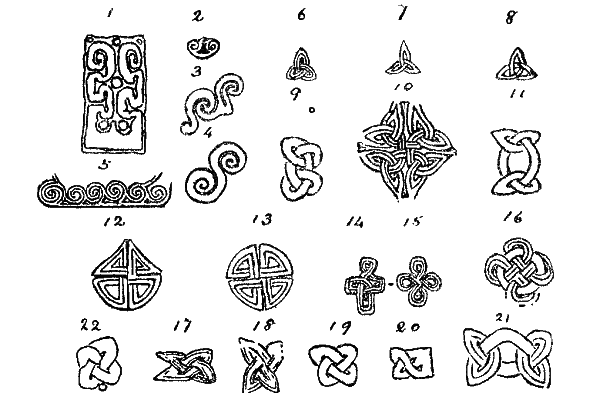
FIG. 21.-GEOME'T'RICAL DESIGNS ON PRE-SCANDINAVIAN PIECES.
Key-Fret-(1) Maughold 65. Spirals-(2) Rushen 50; (3) Michael
64; (4) Maughold 66; (5) Conchan 62. Triquetras--(6) Rushen 50; (7) Maughold
25 ; (8) Santon 68; (9, 10) Lezayre 53; (11, 21) Maughold 51. Fourfold Rings--(12)
Rushen 5o; (13) Lezayre 53; (14) Braddan 56; (15) same, as intended; (16) Lezayre
53 (with ring). Diagonal Rings Interlaced-(I7, 18) Maughold 52; (19, 22) Lonan
57; (20) Conchan 61.
Of these the decorative ornament consists in the first instance of circles, cups, crosslets, pellets, and bosses; later, we come to geometrical designs and patterns. Besides those mentioned, only three show the use of pellets and two of bosses. In two cases, as stated, the stones are cruciform in outline, one being ornamented with incised rings and lines connecting the limbs, the other with a central boss and a unique design of five small cups in a vertical row. Of the four others which bear no interlaced ornament, three of the stones are rectangular, one having what was intended to represent an equal-limbed cross, angled at the junction of the limbs, and decorated with five crosslets-marks, perhaps, of consecration, as this may have been an altar-stone; one a cross and circle ornamented with five bosses, and terminating in a pedestal; and one a Celtic cross and circle ornamented with crosslets between the limbs.
The last, a wheel cross, has the shaft terminating in volutes with triangular designs of pellets between them, and in a sunk panel on the shaft is the figure of a ladle, probably symbolic of the priestly rank of the man to whose memory it was erected.
The exceptional Calf of Man Crucifix, the stem rectangular with a Latin cross, which has as ornamental designs the triquetra, four-fold ring, double spiral, and an annular ring of figure-of-eight plait, brings us to those which are decorated with geometrical designs (fig. 21).
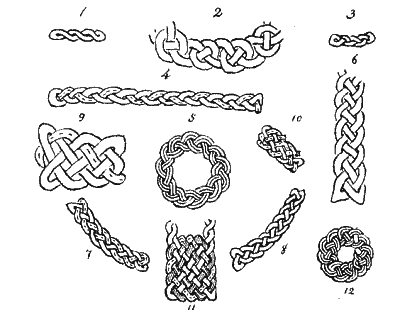
FIG. 22.-PLAITWORK.
Twist-(1) Lonan 57. Twist and Ring-(2) Braddan 56. Plait of
Three-(3) Conchan 61 ; (4) Lonan 57 ; (5) Maughold 51- Plait of Four-(6) Maughold
66 ; (7, 8) Conchan 61. Plait of Five-(9) Maughold 51. Plait of Six-(10) Braddan
69. Plait of Ten-(11) Conchan 62. Figure-of-Eight Plait-(12) Rushen 50.
In this connection we note the total absence of the divergent spiral and of the step pattern, whilst of the key-fret-such an especial favourite both in MS., metal, and stone-work-there is but a solitary instance, and that very badly executed; yet these are three of the chief characteristics of Celtic decorative art. The spiral is but feebly represented in any form. On one piece we meet with it as a detached S-shaped design; on another we find a similar spiral doubled; in one case, 65, there have been rude spiral figures, now too broken to determine their precise character. An exceptional figure is that of a Fylfot with spiral terminations ; the same stone, 62, exhibits a band of beautiful scroll-work. Otherwise we only meet with this design in the form of Volutes terminating the bead borders to the shafts of crosses in four instances (fig. 19).
Of Knot-work we have seven designs-three with the Triquetra, singly, in pair, and four- fold; and four with Rings folded or interlaced (fig. 21).
The following table will show the nature, use, and distribution of the decorative patterns on these early Celtic pieces : -
TABLE OF PATTERNS AND DESIGNS
|
DESIGN. |
LOCALITY. |
|---|---|
|
KEY-(rudely drawn, terminating in volutes) |
Maughold 65. |
|
SPIRAL- |
|
|
S-shaped . |
Michael 64 (below circle surround-ing the limbs of the Cross) ; Maughold 66. |
|
Fylfot, with spiral terminations . |
Conchan 62. |
|
Scroll Work in a band |
Conchan 62. |
|
Spirals at junction of limbs of beast |
Conchan 6z. |
|
C-shaped Spiral, right and left hand |
Rushen 50. |
|
Volutes, to shaft of Cross, single |
Maughold 66 ; Conchan 62, 63. |
|
„ double |
Conchan 62; Michael 64. |
|
„ involved . |
Lonan 49. |
|
KNOT-WORK- |
|
|
Triquetras, single |
Maughold 25 ; Rushen 50; Santon 68. |
|
„ double |
Lezayre 53 ; Maughold 51. |
|
„ design of four continuous |
Lezayre 53. |
|
Four-fold Ring . |
Rushon 50; Lezayre 53 ; Braddan 56. |
|
„ with plain circular Ring interlaced . |
Lezayre 53. |
|
Diagonal oval Rings interlaced . |
Maughold 52 ; Lonan 57 ; Conchan61 (irregular). |
|
The same, interlaced with diamond-shaped Ring . |
Maughold 52- |
|
PLAIT-WORK- |
|
|
Twist . |
Lonan 57. |
|
Twist, with circular Ring |
Braddan 56. |
|
Double Twist, with Diamond-shaped Ring . |
Maughold 58 ; Conchan 59. |
|
Plait-of-Three |
Lonan 57 ; Conchan 61 ; Michael 64;Maughold 51, in ring; Braddan 69. |
|
Plait-of-Four |
Maughold 52 and 66 ; Lonan 57 ;Conchan 61 ; Michael 64 ; Braddan 69. |
|
Plait-of-Five |
Maughold 51. |
|
Plait-of-Six . |
Braddan 69; Maughold 55, worn. |
|
Plait-of-Ten, with "Breaks " |
Conchan 62. |
|
Irregular Plait |
Lonan 57 ; Braddan 69; Conchan 63. |
|
Plait too worn to decipher . |
Maughold 54- |
|
Figure-of-Eight Plait . |
Rushen 50; Conchan 59, 63. |
|
LOOP-FORMS OF PLAIT- |
|
|
Twist, with loop from right to left, facing upwards |
Michael (circle) 64 ; Maughold (shaftand circle) 66. |
|
Twist, with loop from left to right, facing upwards |
Maughold 65. |
|
Twist, with loop facing inwards, surrounded bybands forming Figure-of-Eight Knot |
Conchan (circle) 63. |
|
Twist, with double row of loops . |
Braddan 56. |
Of other designs, we find on a limb of Maughold 51 one of crossed diagonal bands contained within a plain bead border, having rings in the centre and at the four points of crossing, a design met with elsewhere only on the Anglian cross at Chester-le-Street, North Durham. Another is that on the rectangular slab, Conchan 59, a narrow fillet interlacing with the borders of the limbs and circle, and forming between the limbs four double heart-shaped loops. Inanimate objects are represented by two Chairs, a Pastoral Staff, and a closed Book with Celtic cross on the cover.
Of Zoomorphic work we have a good example in the dragon-headed interlacing, Maughold 60. Monstrous figures are represented by dog-headed beasts by the side of crosses at Conchan 62, 63, and Michael 64, and in a panel, Conchan 61 (fig. 23).
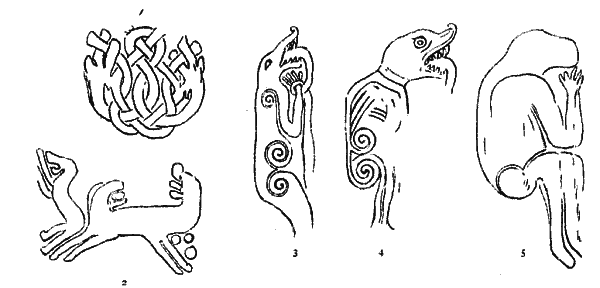
FIG. 23.-ZOOMORPHIC INTERLACING AND MONSTROUS FIGURES ON PRE-SCANDINAVIAN
STONES.
(1) Maughold 60 ; (2, 3, 4) Conchan 61, 62, 63 ; (5) Michael 64.
Other pieces show human and animal forms as decoration, generally well drawn. Animals are represented by the hound, Michael 64, Maughold 65 and 66; stag, Maughold 65 and 66; and boar, Maughold 66 and 67; on the Braddan wheel-cross 69 are four nondescript figures, dog-like rather than anything else. Of man we have one, probably a Bishop, with closed book on his breast clasped by his two bands, and a pastoral staff by his side, Maughold 65 ; robed ecclesiastic, Maughold 66; seated monks in chairs, Maughold 67. Also man on horse- back, Maughold 67; hunting, Maughold 66; and armed with spear, Michael 64 and Santon 68. Finally, on the cross, Maughold 51, which may perhaps be Anglian, we have a representation intended, I think, for Christ (fig. 24, 5).
The only Scripture subject (besides the Calf of Man Crucifix) figured on these early Celtic pieces is that of Daniel in the lions' den, one of a class found in paintings in the catacombs and sculptured on early sarcophagi, which occurs with equal frequency on Irish and Scottish monuments of this period.
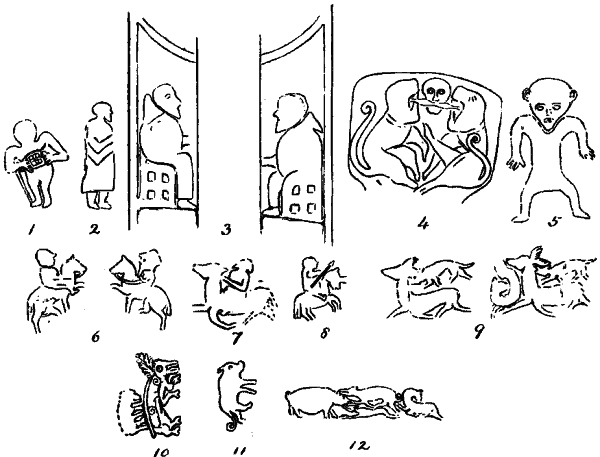
FIG. 24.-HUMAN AND ANIMAL FORMS ON PRE-SCANDINAVIAN PIECES.
Men-(1, 2, 3) Maughold 65, 66, 67; (4) Braddan 69; (5) Maughold 51. Men on Horseback-(6,
7) Maughold 67, 66; (8) Michael 64. Stags and Hounds-(9, 10) Maughold 66, 65.
Boar-(11) Maughold 67. Boar and Hounds-(12) Maughold 66.
Thus we have on these pre-Scandinavian pieces one form of key pattern, eight of the later Celtic spiral, seven knots, fourteen interlaced designs, Zoomorphic plait and dog-headed monsters, three beasts, and seven representations of the human figure, besides the Scripture subjects.
This decorative ornament is exhibited on eighteen pieces sculptured in relief. The incised pieces have four with designs; the sunk pieces and about seven of those in relief have no ornament, except in some cases bead-borders, in two bosses, and in three central rings. Six others have circlets, cups, pellets, bosses, or crosslets, without other ornament. Of these eighteen pieces, seven are from Maughold, four from Conchan, two from Braddan, and one each from Lezayre, Lonan, Santon, Rushen, and Michael.
One early piece furnishes an unique example on stone of the Byzantine treatment of the Crucifixion; one appears by the inscription to be Anglian, while two or three others seem to show Anglian influence in their decoration. One I take to be Cymric, of a class represented in Cumberland. The Celtic work on the others appears, on the whole, to be rather late, probably from the end of the tenth or beginning of the eleventh century. Though belonging to the Irish school of decorative art, it is clear from the design of double twist and diamond-shaped ring and the different forms of loop-plait not exactly matched elsewhere, and from other details alike in the geometrical and the figure drawing, that here has been no slavish copying from Irish, Scottish, or other monuments, but an independent working on well-known Celtic art motives, with considerable skill in execution and originality in design.
|
|
||
|
|
||
|
|
||
|
Any comments, errors or omissions gratefully received
The Editor |
||